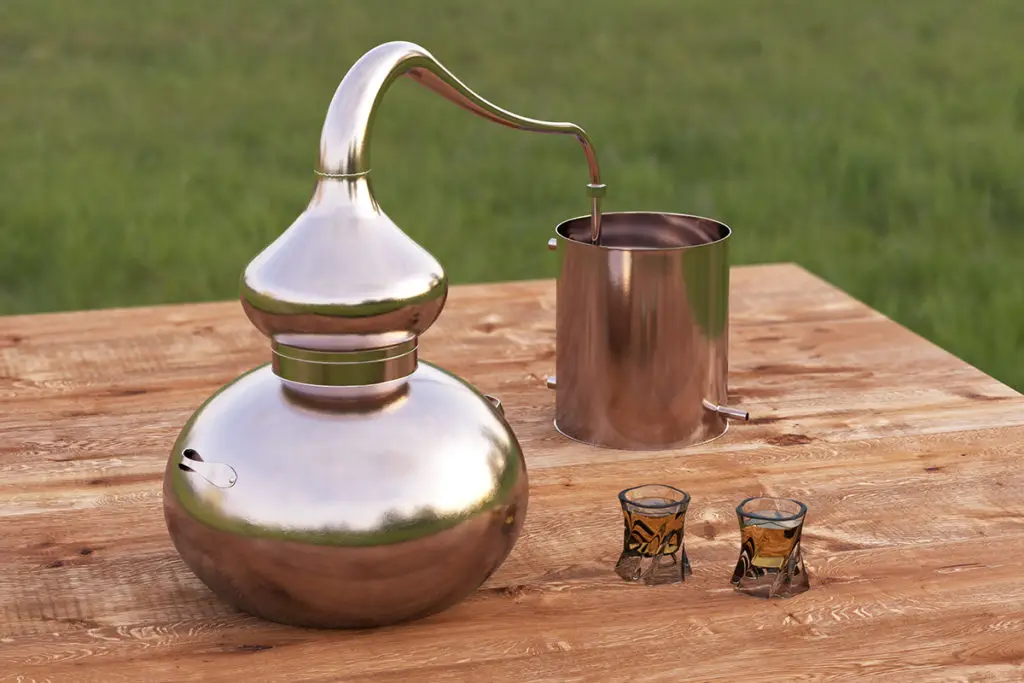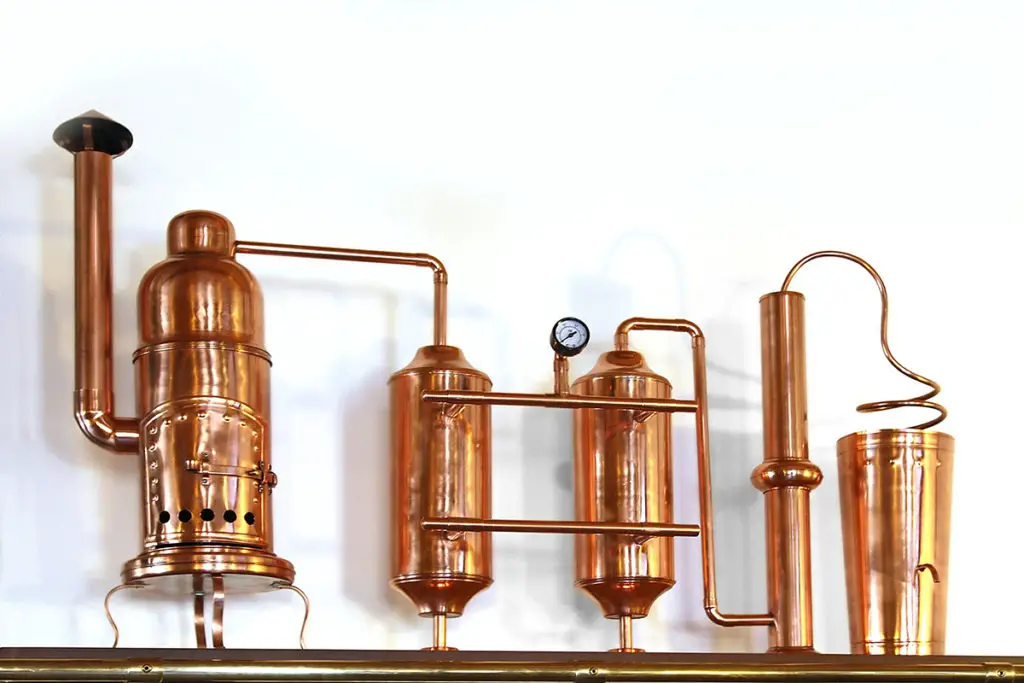Moonshine or “Shine” has long been shrouded in myth and mystery. As a strong type of alcohol that’s typically made outside of government regulations, drinking it can seem like a gamble. One rumor surrounding moonshine is that it even has the potential to make you go blind — and it’s a rumor with a touch of truth to it.
Can moonshine make you go blind?
Moonshine won’t make you go blind if it’s properly made. However, moonshine made with a destructive distillation process can make you blind. When alcohol isn’t properly distilled, it can contain methanol that breaks down in the body into compounds that can damage the optic nerve and cause blindness.
Let’s take a closer look at what moonshine is, how it came to be, and the hazards of drinking moonshine. Keep reading to understand better the distillation process and what can go wrong when distilling alcohol outside of a properly regulated system.
Badly Distilled Moonshine Can Cause Blindness
The rumor surrounding drinking moonshine and blindness comes from the distillation process. During this process, four different steps occur. The first step releases chemicals that could potentially cause permanent blindness.

Shaker & Spoon - We bring the bar to you! It's the perfect home happy hour🍸→ Get Your Drink Box
When alcohol is distilled properly, these chemicals are removed and don’t pose a threat to your vision. However, as moonshine is created outside of normal government regulation, it becomes possible to distill the alcohol improperly and create a dangerous mix of chemicals.
Let’s take a closer look at the distillation process to understand where the threatening chemicals are released.
Step 1: Releasing the Foreshots
Foreshots are the first set of compounds released during the distilling process as you begin to heat up the distillate. Foreshots include harsh and dangerous chemicals like pure methanol and acetone.
In the foreshots, there’s the potential for serious damage, including blindness and even death.
When the foreshots are released properly, the methanol is removed and the ethanol (the spirit found in this type of alcoholic beverage) remains.
Foreshots will make up about 5 percent of your distillate. These are the most dangerous part of the distillate and need to be properly removed. In regulated distilled beverages, these dangerous chemicals are routinely removed. However, there’s no guarantee they’ve been properly discarded in bootleg beverages.
If the methanol from the foreshots makes its way into your body (methanol intoxication), it can wreak some serious havoc. It can enter your liver and break into a series of damaging compounds. These include formic acid and formaldehyde.
Formic acid can damage your optic nerves, hence the rumors of blindness that accompany the making of moonshine. As little as 4 mL (0.14 oz) of this acid is enough to do significant damage to your vision. If you were to ingest between 30 to 60 mL (2.03 oz), it could be enough to kill you.
The other compound, formaldehyde, can cause additional problems in your nervous system.
Step 2: Releasing the Heads
Next, the heads are released. During this step of the process, you can detect paint thinner and solvent smells. It’s the chemicals in this stage that can cause a hangover as well as make you into an aggressive drunk.
Heads can make up between 20 and 30 percent of your distillate.
Higher quality drinks will remove more of the heads, as they’re considered waste as well. However, cheaper alcohols might keep more of them in the final product to keep the cost low. The more heads your distillate contains, the worse the potential hangover will be.
Step 3: Reaching the Heart
The next part of the process is called the Heart. This is the desirable part of your distillate, what you’re actually pouring into the glass and consuming. Higher quality alcohols will feature more of the heart and less of the other waste parts of the distillation process.
Step 4: Arriving at the Tails
Finally, there are the tails. This part can be fatty, oily, sour, or quite runny. The tails are another undesirable part of the distillate and also account for about 20 to 30 percent of your total distillate. High-quality alcohols might remove more of the tails than the cheaper options.
Most Brands Will Remove the Dangerous Foreshots
When you look at the numbers, there’s quite a bit of waste in the distilling process. Up to 65 percent needs to be discarded, as it falls into the category of foreshots, heads, or tails.
While the number of heads and tails might be higher in cheaper spirit brands, any regulated distiller will safely remove the dangerous foreshots. However, the regulations that make sure this part of the process is complete aren’t in place for people who make their own moonshine.
To learn more about the distillation process and what can go wrong, check out this informative video by Common Man Cocktails on YouTube:
Some Moonshine Makers Cut Corners To Cut on Costs
While government regulation typically keeps the distillery process running smoothly and safely, there have been times in our history where these regulations weren’t in place. In the days of prohibition, alcohol was banned completely by the government.
However, just because it was illegal did not mean that people stopped drinking. People took to making alcohol illegally. This type of bootleg liquor took on the name moonshine because it would be made secretly under the darkness of night.
The term moonshine can conjure up images of people distilling alcohol in their bathtubs or using a secret moonshine still. Between the necessary secrecy of the illegal activity and the lack of experience of some distillers, it’s easy to see how the making of moonshine could be potentially hazardous and cause someone to go blind or worse.

Additionally, in an attempt to make it cheaper to produce, it can be tempting to cut corners in the ingredients and process of making moonshine. If producers use whatever they get their hands on and distill it in unconventional materials, it’s easy to imagine how the final product might contain toxic chemicals.
In addition to the foreshots, other chemical contaminants in moonshine have been linked to blindness. If the alcohol has been distilled in containers containing lead, it’s quite possible for this harmful chemical element to enter the final moonshine product. Consuming lead can cause lead poisoning, which can, in turn, lead to vision damage and blindness.
Final Thoughts
When moonshine is properly distilled, it doesn’t contain the chemicals that could make you blind. However, suppose the distillation process was improperly carried out.
In that case, enough methanol can exist in the final product that it could cause methanol poisoning and seriously damage your optic nerves, even enough to make you go blind.
